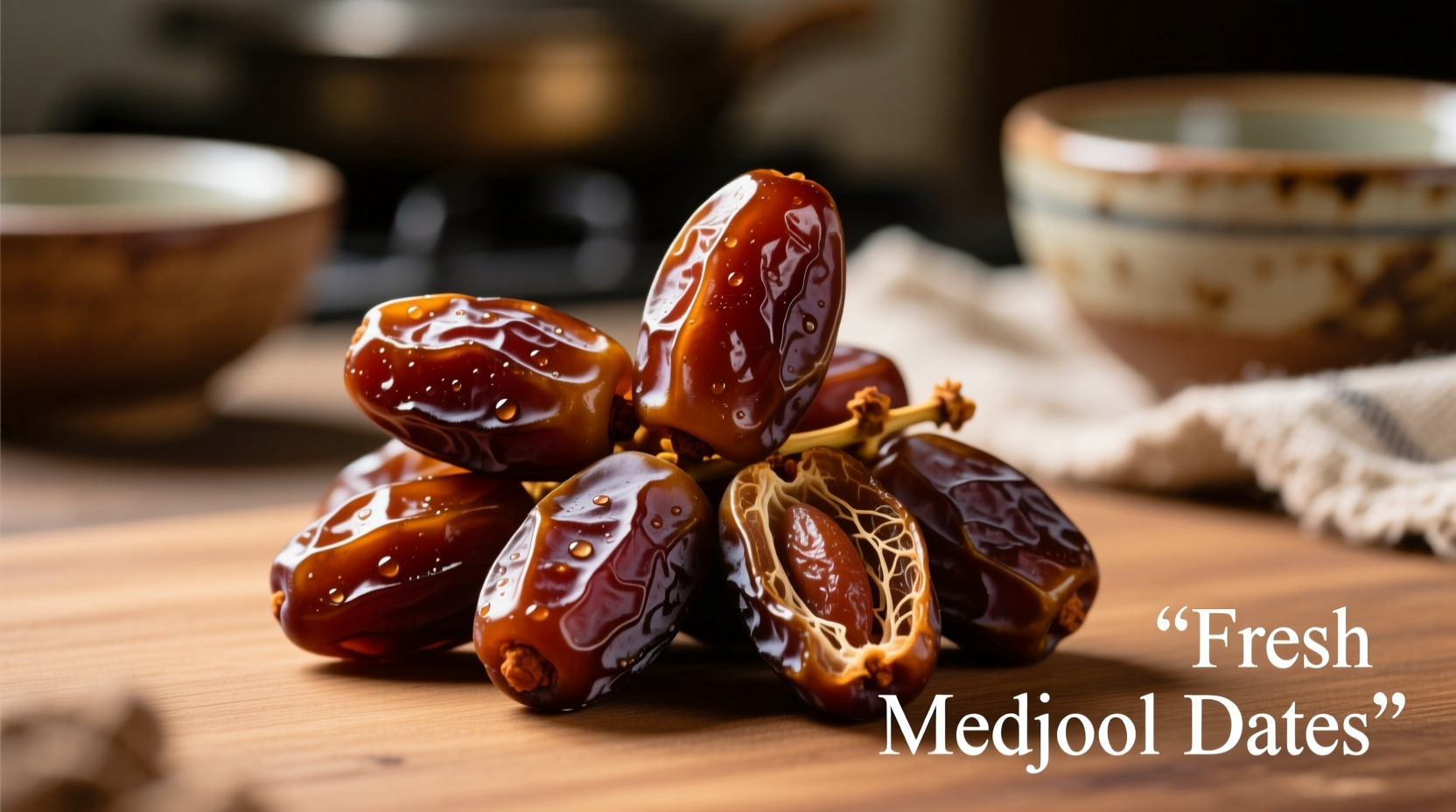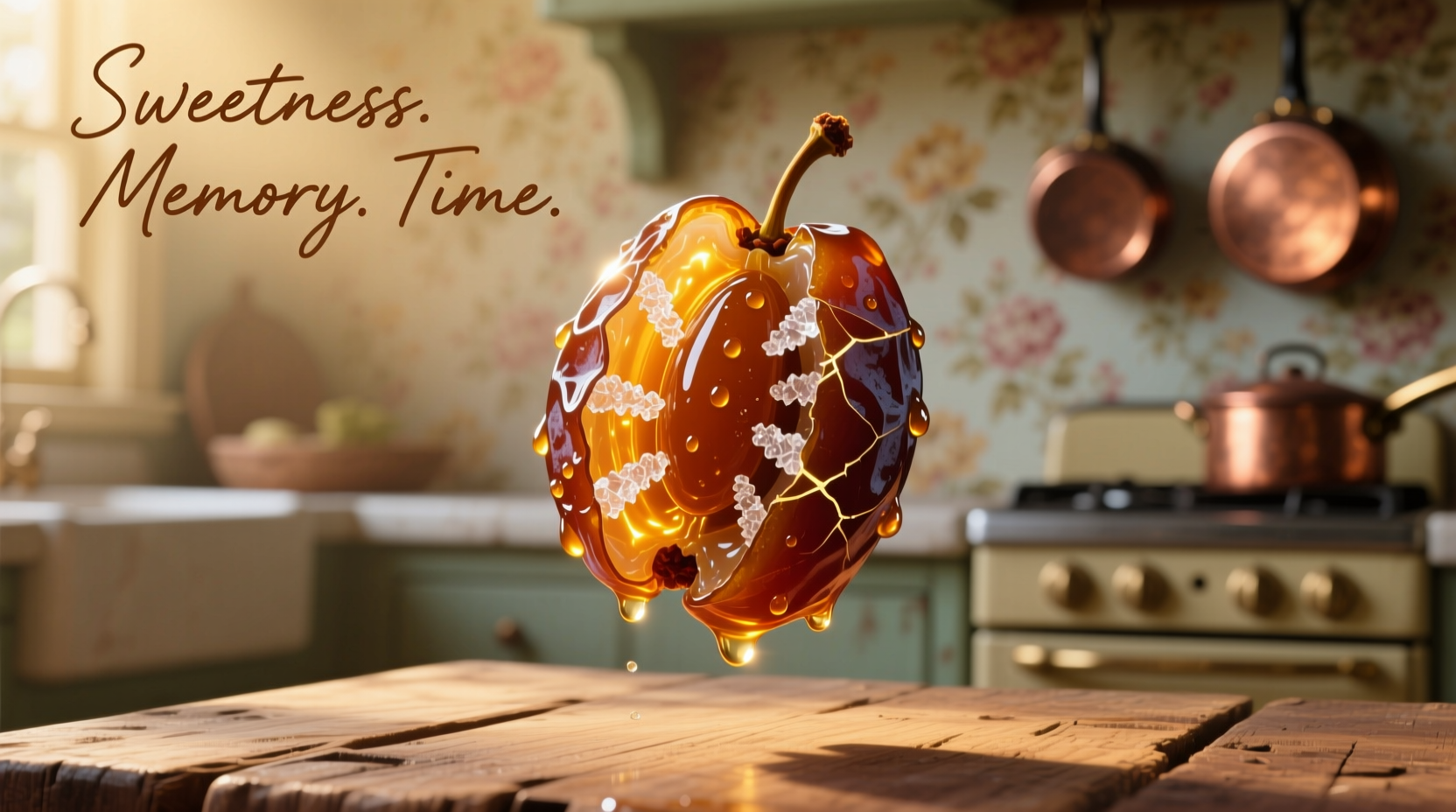Dates taste like a perfect blend of caramel, honey, and brown sugar with subtle notes of toffee and a rich, deep sweetness balanced by a slight nuttiness. The texture ranges from soft and chewy to firm and fleshy depending on variety and ripeness. Medjool dates offer the most complex flavor profile with their moist, almost creamy texture and notes of maple and butterscotch.
When you bite into a ripe date, you're greeted with an intense natural sweetness that's remarkably balanced—not cloying like refined sugar but complex like nature's perfect candy. This distinctive flavor profile makes dates a beloved fruit across Middle Eastern, North African, and South Asian cultures where they've been cultivated for thousands of years.
The Science Behind Date Flavor
Dates contain approximately 63-67% natural sugars by weight, primarily glucose and fructose, which creates their signature sweetness without the aftertaste of artificial sweeteners. According to USDA nutritional data, this natural sugar composition gives dates a glycemic index of around 42-55, making them surprisingly balanced despite their intense sweetness. The flavor complexity comes from over 15 different organic compounds that create those characteristic caramel and toffee notes.

How Date Texture Enhances the Taste Experience
The texture of dates significantly influences how we perceive their flavor. Unlike simple sugars that dissolve quickly, dates offer a satisfying chew that releases flavor gradually. When properly ripe, dates have a moisture content of 15-30%, creating that perfect balance between chewy and tender. Underripe dates taste more like fresh fruit with subtle sweetness, while overripe dates develop fermented notes that some describe as reminiscent of rum or brandy.
Comparing Popular Date Varieties
Not all dates taste the same—different varieties offer distinct flavor experiences. Understanding these differences helps you select the perfect date for your culinary needs.
| Date Variety | Sweetness Level | Flavor Notes | Texture | Best Uses |
|---|---|---|---|---|
| Medjool | ★★★★★ | Caramel, toffee, honey, subtle maple | Soft, moist, almost creamy | Eating raw, desserts, smoothies |
| Deglet Noor | ★★★☆☆ | Milder, delicate honey, slight nuttiness | Firmer, slightly chewy | Cooking, baking, stuffing |
| Barhi | ★★★★☆ | Candy-like, butterscotch, fresh fruit notes | Crunchy when unripe, soft when ripe | Eating fresh, salads |
| Halawi | ★★★★☆ | Honey, caramel, pronounced nutty finish | Soft, slightly chewy | Desserts, energy snacks |
Factors That Influence Date Flavor
Several elements affect how dates taste, creating natural variations you might experience:
Ripeness Level
Dates go through three ripening stages: kimri (unripe, green, astringent), rutab (partially ripe, softening), and tamar (fully ripe, dark, sweet). The fully ripe tamar stage delivers the characteristic caramel sweetness most people associate with dates. Dates harvested at different stages create distinct flavor experiences—some cultures prefer slightly underripe dates for their refreshing tartness.
Storage Conditions
Refrigeration preserves dates' fresh flavor for months, while room temperature storage allows natural fermentation to develop deeper, more complex notes over time. Dates stored in airtight containers maintain moisture, while those exposed to air develop a slightly crystallized sugar texture on the surface that intensifies sweetness perception.
How to Best Experience Date Flavor
Maximize your date tasting experience with these professional tips:
- Temperature matters: Slightly chilled dates offer a refreshing experience, while room temperature dates release more aromatic compounds
- Clean palate: Taste dates after neutral foods like plain crackers to fully appreciate their complexity
- Pairing wisdom: Combine with salty cheeses, nuts, or citrus to balance the sweetness
- Freshness check: Plump, moist dates with a rich brown color indicate peak flavor
Culinary Applications Based on Flavor Profile
Understanding date flavor helps you use them effectively in cooking:
Medjool dates work beautifully as natural sweeteners in desserts where their complex caramel notes shine. Their high moisture content makes them perfect for date paste that can replace up to ⅔ of refined sugar in baking. Deglet Noor dates maintain their shape better during cooking, making them ideal for stuffed dates or incorporation into grain dishes where you want distinct date pieces.
Professional chefs often enhance date flavor by briefly toasting them, which intensifies the caramel notes through the Maillard reaction. Adding a pinch of sea salt counteracts sweetness and brings out subtle nutty undertones, while citrus zest can brighten the rich flavor profile.
Why Dates Taste Different Than Other Sweet Fruits
Unlike bananas or mangoes that offer tropical fruit sweetness, dates provide a deeper, more complex sweetness profile similar to cooked sugars. This is because dates contain invert sugars (glucose and fructose) rather than sucrose, creating a smoother sweetness without the sharp edge of table sugar. The absence of water content found in most fruits concentrates the sugars and flavor compounds, resulting in that distinctive rich, almost syrupy sweetness.
Common Flavor Misconceptions
Many people expect dates to taste exactly like caramel candy, but authentic date flavor has subtle differences. Real dates offer a more nuanced sweetness with earthy undertones that artificial caramel lacks. Some commercial date products add sugar or syrup, creating an unnaturally sweet product that doesn't represent true date flavor. When selecting dates, look for products with no added ingredients to experience the genuine taste profile.
Are dates supposed to taste like caramel?
Yes, high-quality ripe dates naturally taste like caramel due to their sugar composition and natural compounds that develop during ripening. Medjool dates in particular have strong caramel and toffee notes, though the flavor is more complex and less one-dimensional than artificial caramel.
Why do some dates taste fermented or alcoholic?
Dates naturally contain yeast that can cause fermentation when stored at room temperature for extended periods. This creates subtle alcohol notes similar to rum or brandy. While some cultures enjoy this fermented flavor (called 'nabidh' in traditional Middle Eastern cuisine), it indicates the dates are past their peak freshness for standard consumption.
How does date texture affect the taste experience?
Texture significantly impacts flavor perception. Moist, soft dates like Medjool release sweetness gradually as you chew, creating a longer flavor experience. Drier, firmer dates like Deglet Noor deliver a more immediate sweetness burst. The chewiness also stimulates saliva production, which helps balance the intense sweetness and enhances flavor complexity.
What's the difference in taste between Medjool and Deglet Noor dates?
Medjool dates offer a richer, more complex flavor profile with pronounced caramel, toffee, and butterscotch notes and a soft, almost creamy texture. Deglet Noor dates have a milder, more delicate honey-like sweetness with subtle nuttiness and a firmer, slightly chewy texture. Medjool dates are generally preferred for eating raw, while Deglet Noor works better in cooking where you want the date flavor without overwhelming other ingredients.











 浙公网安备
33010002000092号
浙公网安备
33010002000092号 浙B2-20120091-4
浙B2-20120091-4